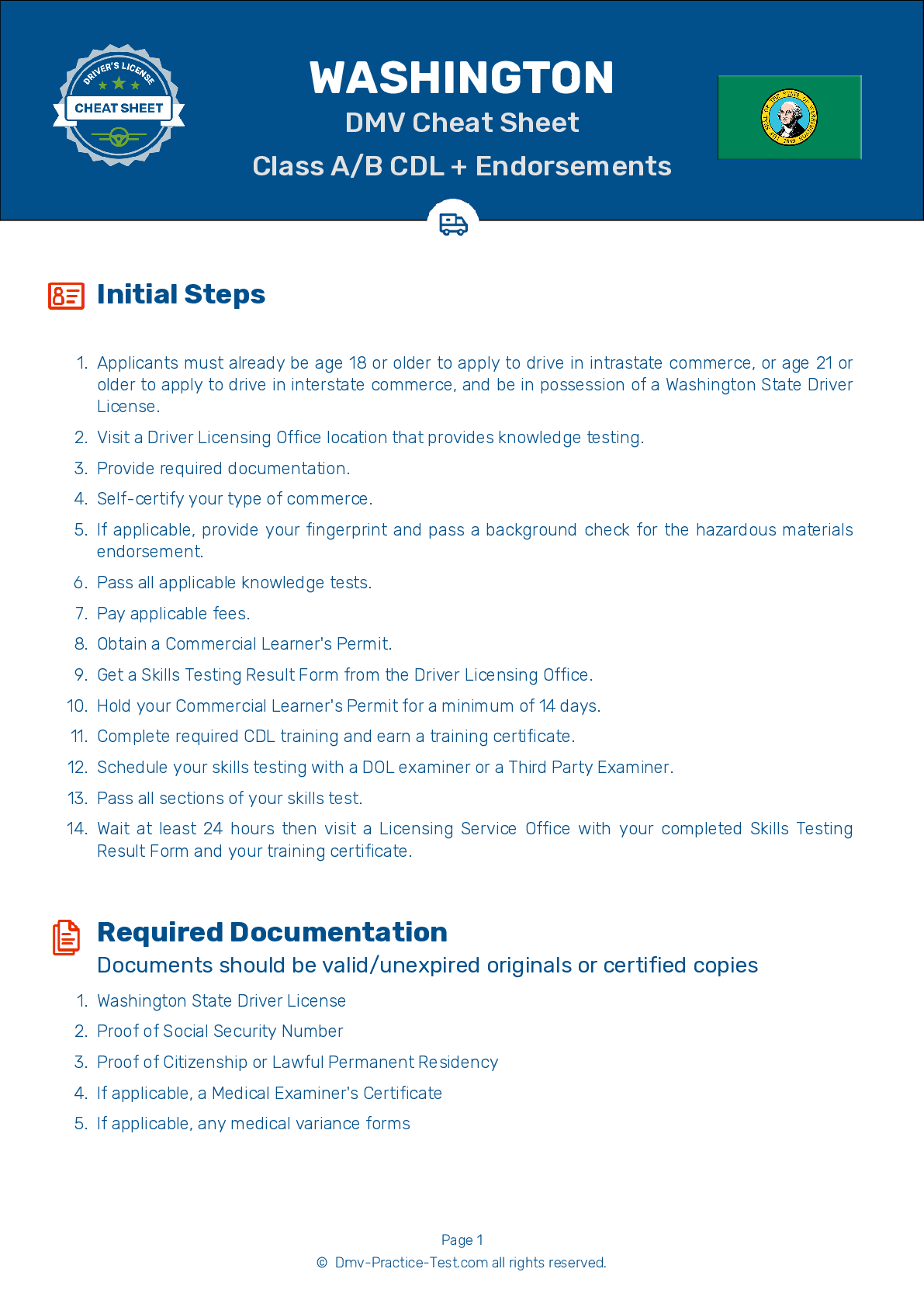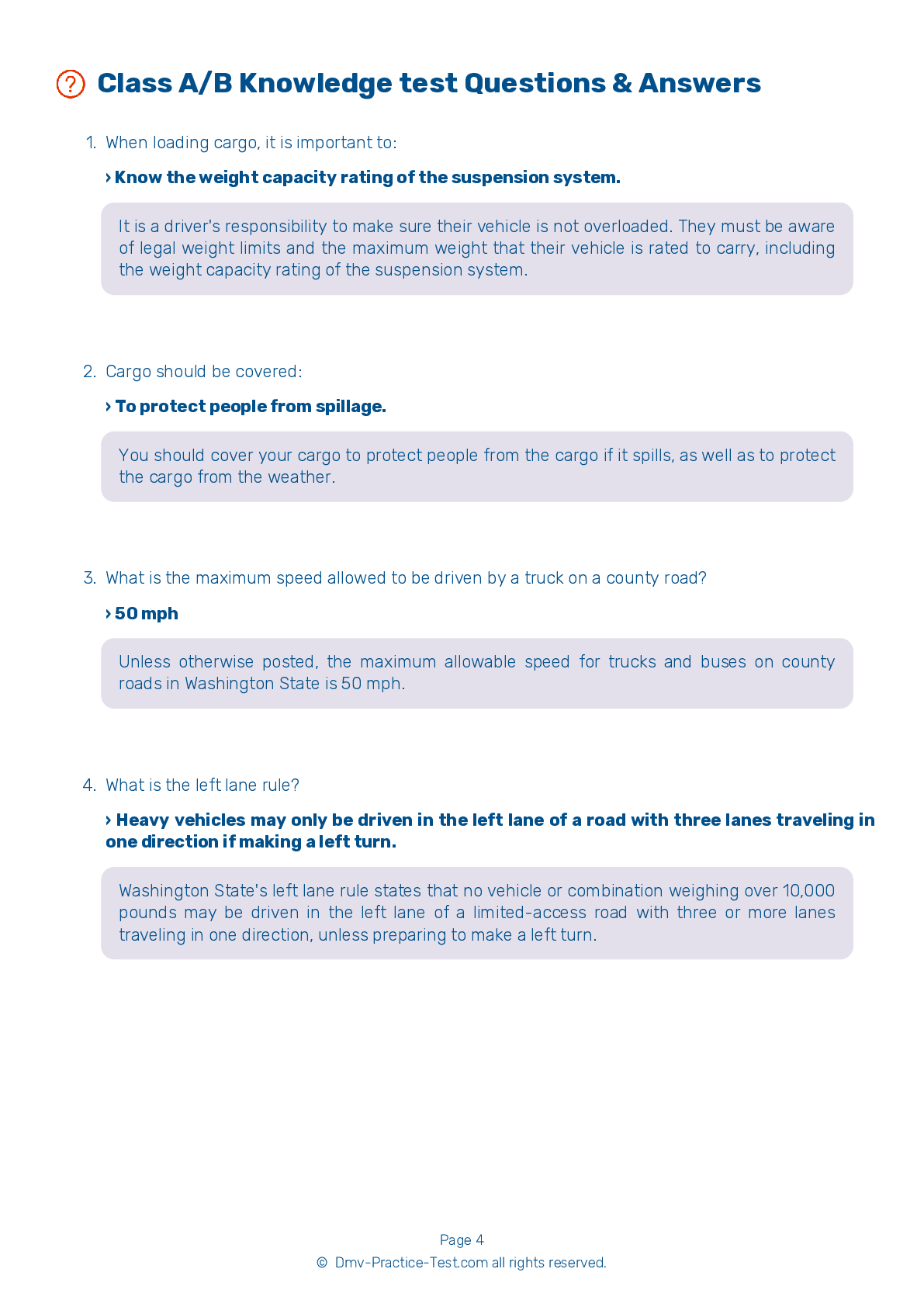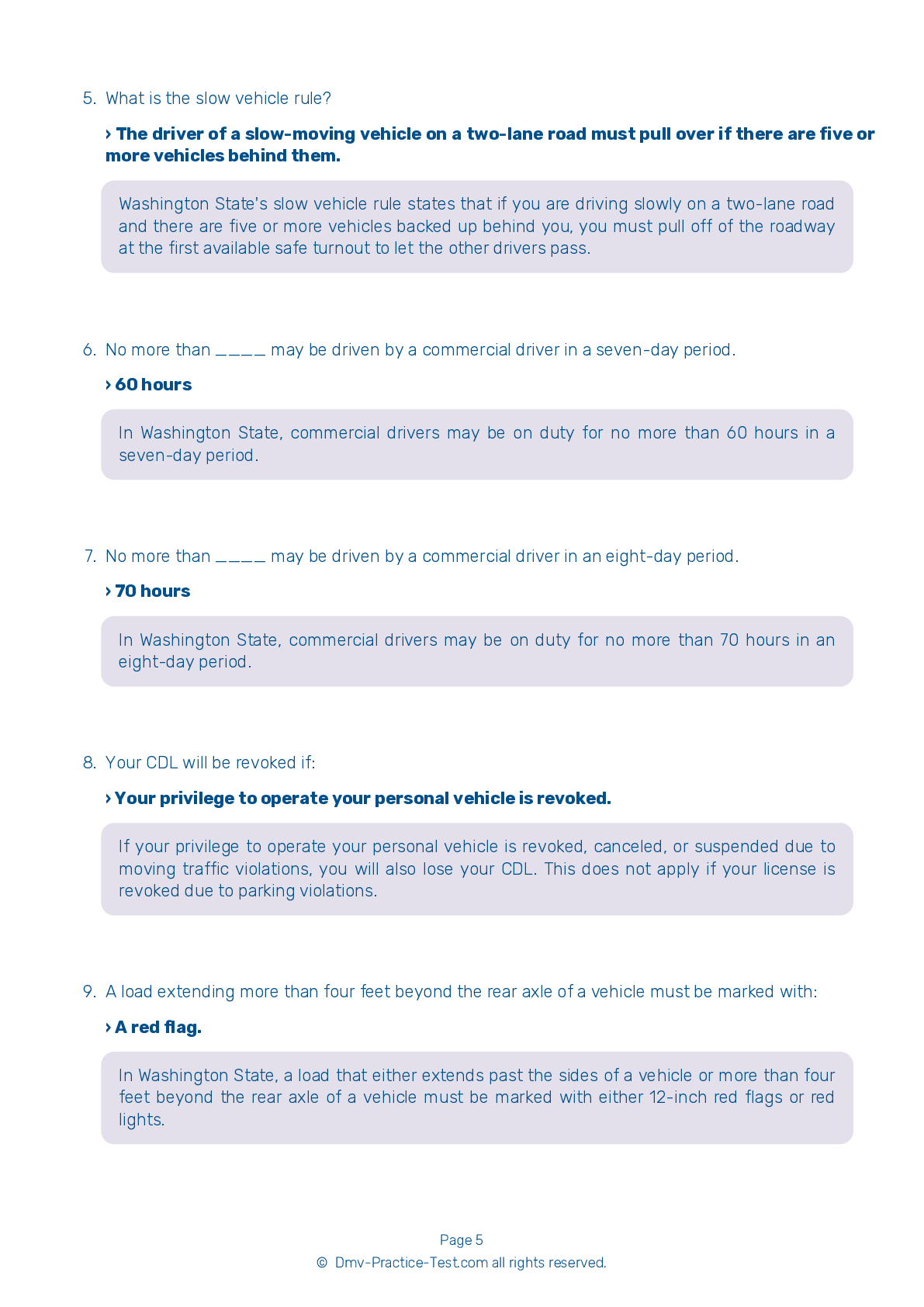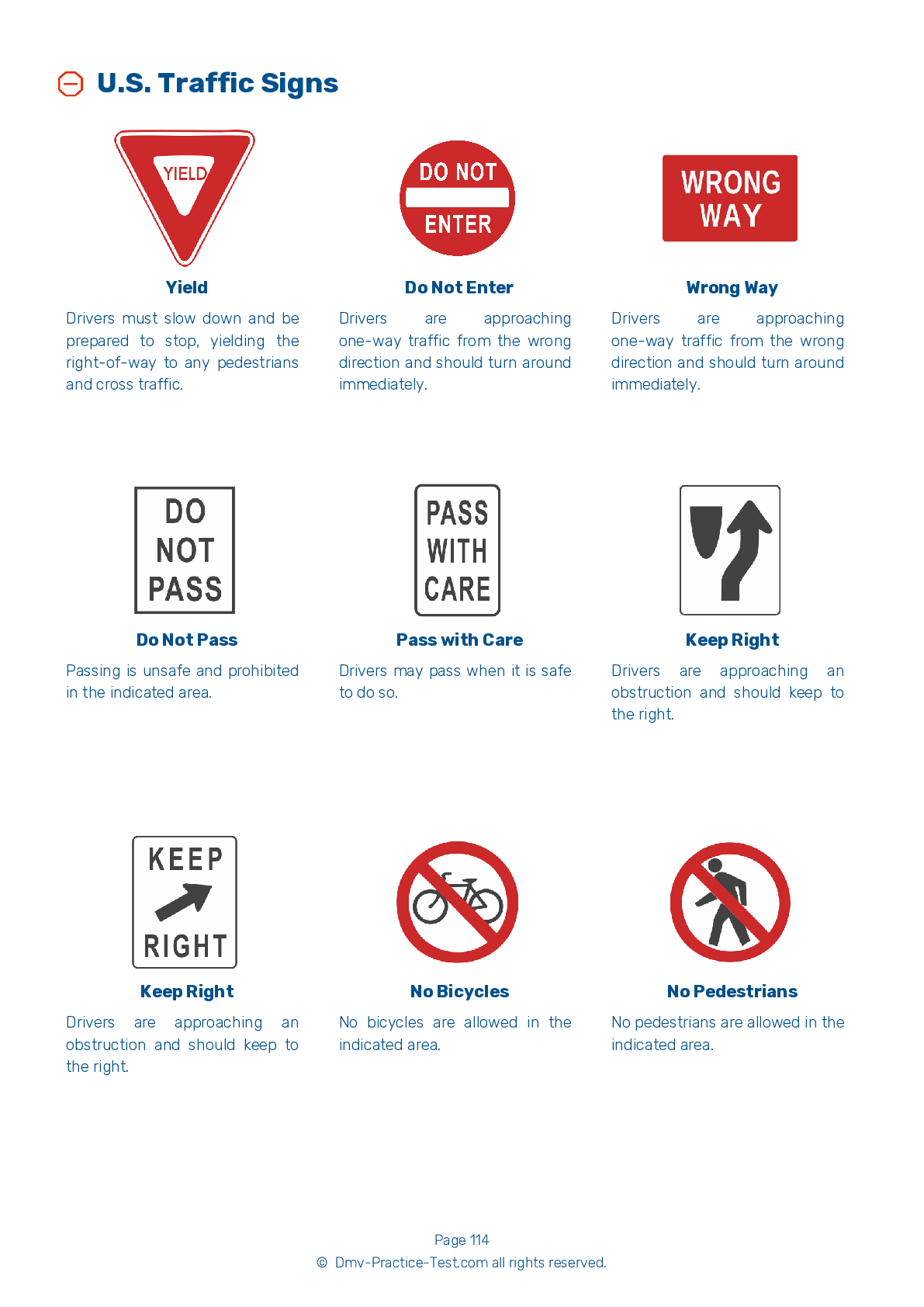Class A Driving Test | Washington 2025 #2 Page 4 of 7
Train for FREE online with our Washington class A license test. The official exam test consists of several obligatory parts, with all of them checking your knowledge of different blocks of road rules. If you need to obtain a WA CDL class A permit in 2025, practice as much as possible. Free sample tests published on our website will help you check and improve your knowledge and boost your grades. Please bear in mind that CDL class A requirements may vary from state to state.
22 . Who can approve an oversized vehicle?
The Washington State Department of Transportation may issue permits to allow oversized and overweight vehicles (other than school buses) to operate on state highways.
23 . When starting from a complete stop, a vehicle should:
To avoid hitting vehicles behind you, you must ensure that your vehicle will not roll backward when you start moving forward from a stopped position.
24 . Mirror adjustment can only be checked properly if:
On a vehicle with one or more trailers, mirror adjustment can only be checked accurately if the trailers are straight. Mirror adjustment should be checked before the start of every trip.
25 . If the low air pressure warning signal comes on in a vehicle with air brakes, the driver should:
If the low air pressure warning signal comes on while you are operating a vehicle with air brakes, you should stop and safely park the vehicle as soon as possible. It is essential that you are able to stop safely while you still have some braking power remaining.
26 . If using spring brakes when hauling a heavy load, a complete stop will:
Spring brakes do not work on all axles. If your vehicle's spring brakes activate due to low pressure in an air brake system, your vehicle will need a longer distance to stop than usual, especially if you are carrying a heavy load.
27 . Bracing is used to:
Blocking and bracing are used to prevent cargo from shifting in transit. Blocking is used in the front, in the back, and on the sides of a piece of cargo to prevent movement. Bracing prevents movement by reaching from the upper portion of a piece of cargo to the floor and sides of the cargo compartment.
28 . To qualify for a CDL, which of the following is not an acceptable method for obtaining the minimum required training?
If you are applying for your first CDL, or you have not been commercially licensed for the past year, you must provide proof of completing a commercial driver training program from a state-approved training school or registered employer.
See the exact questions that will be on the 2025 Washington DMV exam.
99.2% of people who use the cheat sheet pass the FIRST TIME
Lillian MCcranie explains how our CDL study guide was helpful in passing the exam and recommends it to everyone.
Cameron tells us how he purchased the CDL exam, and found it to be a useful tool which helped him pass the exam and find a job.



